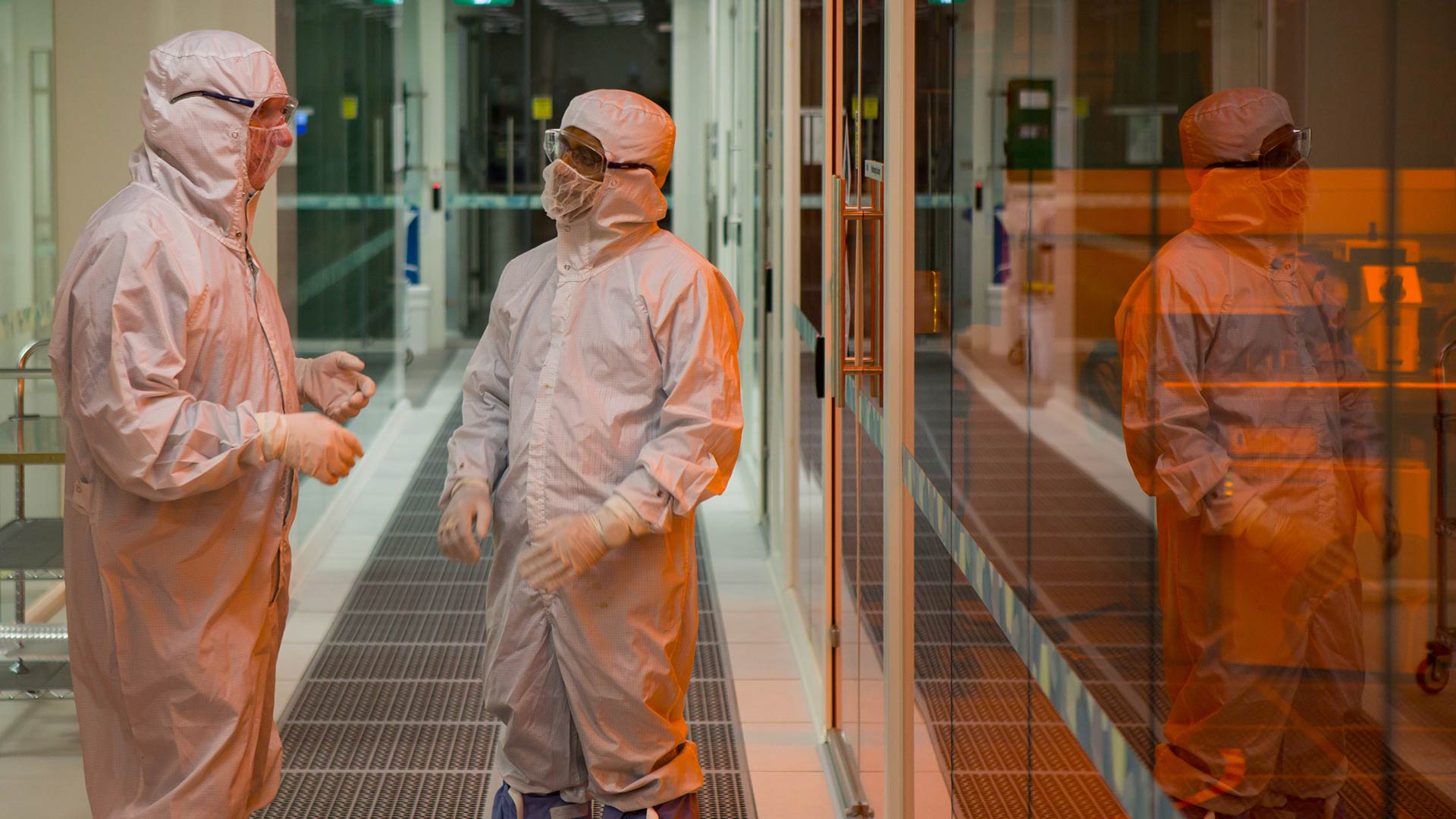Our team uses the science of light to create new technologies that are more energy efficient, faster, and more compact to solve challenges across the biomedical, data communications and defence industries.
We are based at RMIT University and are working to bridge the gap between fundamental physics and industry in Australia.
We work with industry and end-users to design, prototype and scale-up photonic chips to make new products that can be printed precisely and cost-effectively.
Read about our partnerships below.
InPAC is made up of six key research areas, with each area overseen by a team leader that brings together groups
of researchers and students interested in that key research area.
Covers the complete circuit design flow process for the design, simulation and layout of photonic integrated circuits.
Ensures that all our photonic integrated circuits perform the way they were intended for many different applications.
After a chip has been designed and fabricated, interfacing ensures it can be packaged to fit within your existing systems.
Explores how cutting-edge integrated photonics can achieve ultra-high speed data communications.
Advancing diagnostics by offering advanced tests for early illness prediction by combining photonics and microfluidics.
Engages with industry and defence agencies to provide integrated photonic solutions for more precise, accurate and compact sensors.
We have a range of opportunities available for PhD positions, Postdoctoral positions and Internship and Capstone pro-
jects.

Our Centre is based at RMIT and works with industry and end-users to design, prototype and scale-up photonic chips to make new products. A special focus is set on energy efficiency, compact, light-weight and robust (mechanical and electro-magnetic) solutions.
Our team is made up of academics who are well-connected to photonics industries and manufacturers. We see ourselves as the translators between fundamental physicists and industry, to help bridge the gap of the ‘valley of death’ in translating research into a usable product. And we’re proven to do that in two years.
We are constantly monitoring emerging global trends to ensure that the chips are compatible with evolving scale up mass manufacture. This means whatever the end-product, it can be rapidly translated into the global industrial context.
No matter the standards and serialised interfaces you use, we can work with you to prototype a product that you can ‘plug straight in’ to your existing systems. This has two benefits for you; firstly, you will immediately derive value from your prototype because it is made to fit, and secondly, you will be able to obtain critical feedback for the next iteration.
We work with high quality businesses and end-users to achieve global impact. We have a vision of one day establishing a manufacturing base for these chips here in Australia.
Director: Arnan Mitchell
Email: arnan.mitchell@rmit.edu.au
Acknowledgement of Country
RMIT University acknowledges the people of the Woi wurrung and Boon wurrung language groups of the eastern Kulin Nation on whose unceded lands we conduct the business of the University. RMIT University respectfully acknowledges their Ancestors and Elders, past and present. RMIT also acknowledges the Traditional Custodians and their Ancestors of the lands and waters across Australia where we conduct our business - Artwork 'Luwaytini' by Mark Cleaver, Palawa.
Acknowledgement of Country
RMIT University acknowledges the people of the Woi wurrung and Boon wurrung language groups of the eastern Kulin Nation on whose unceded lands we conduct the business of the University. RMIT University respectfully acknowledges their Ancestors and Elders, past and present. RMIT also acknowledges the Traditional Custodians and their Ancestors of the lands and waters across Australia where we conduct our business.